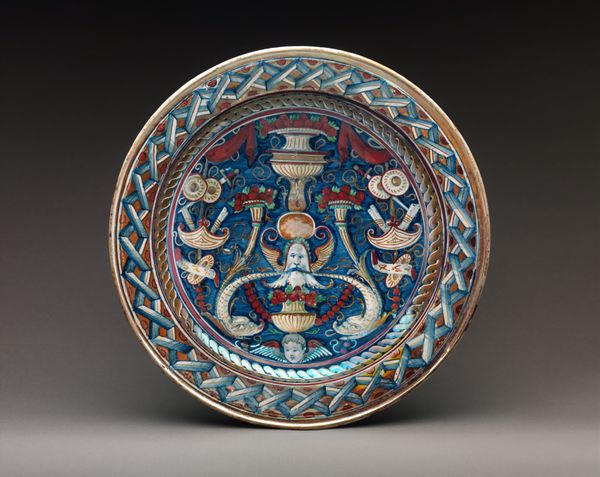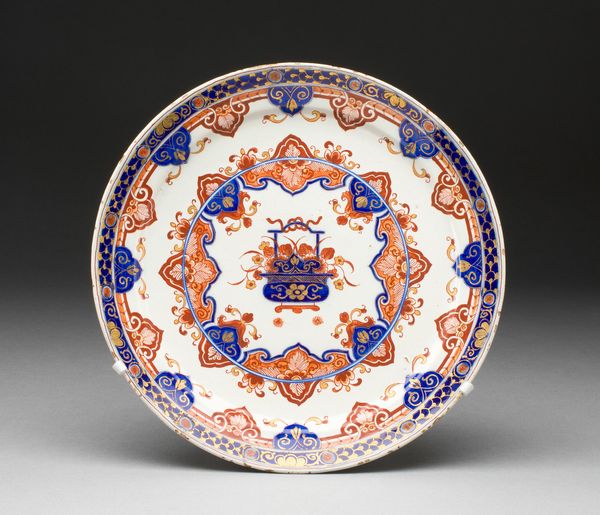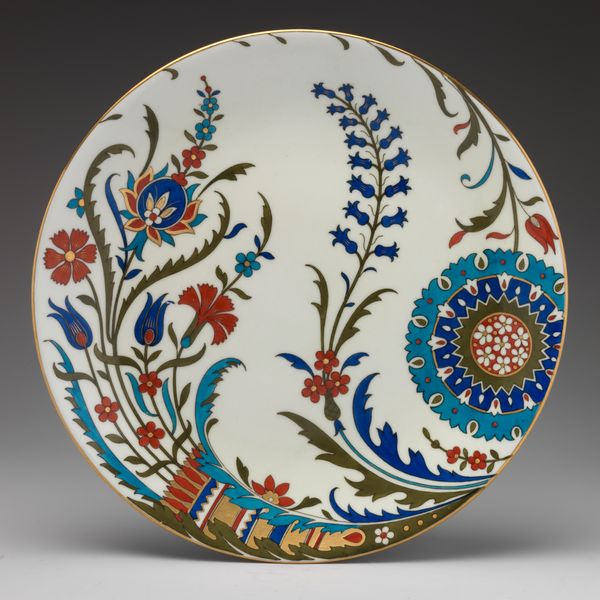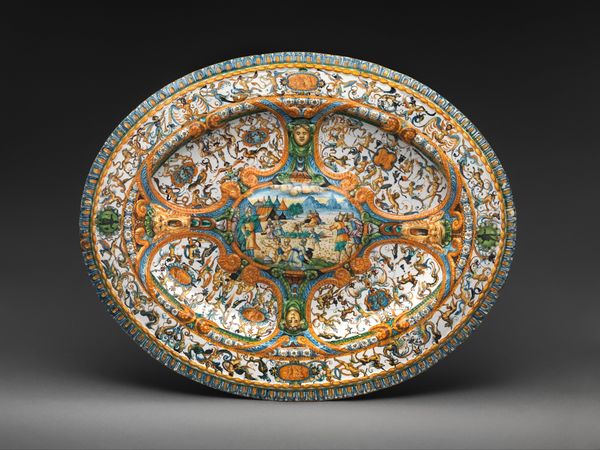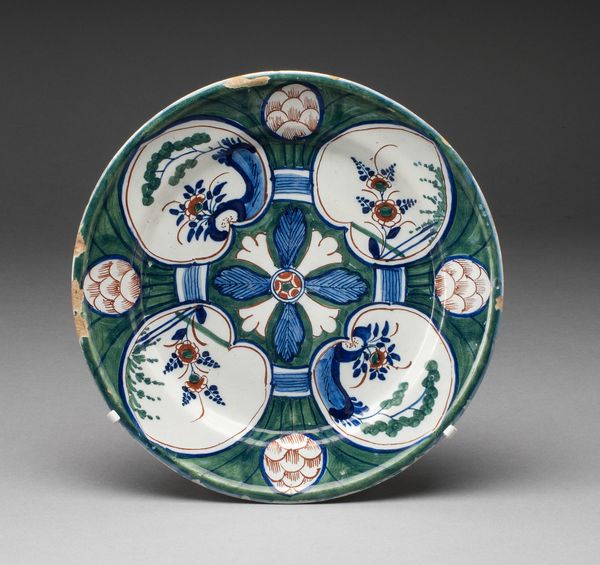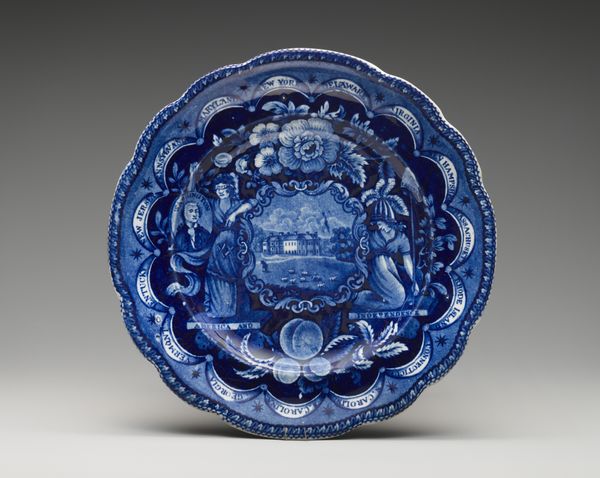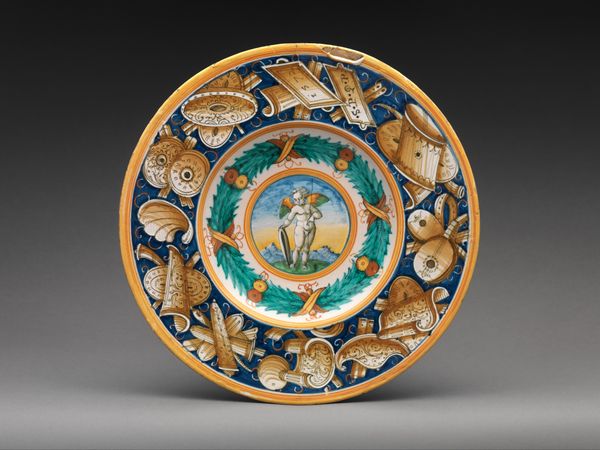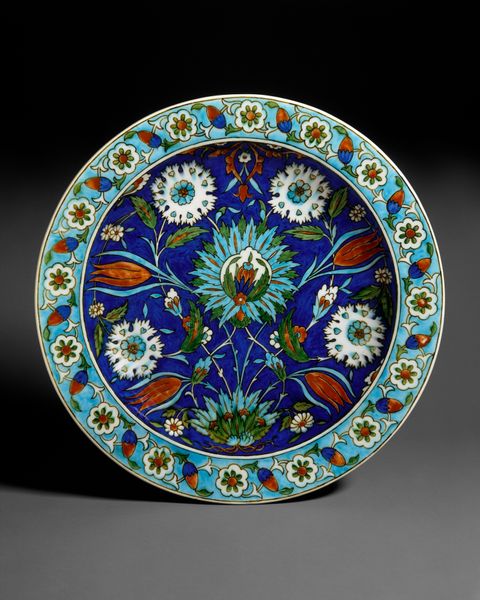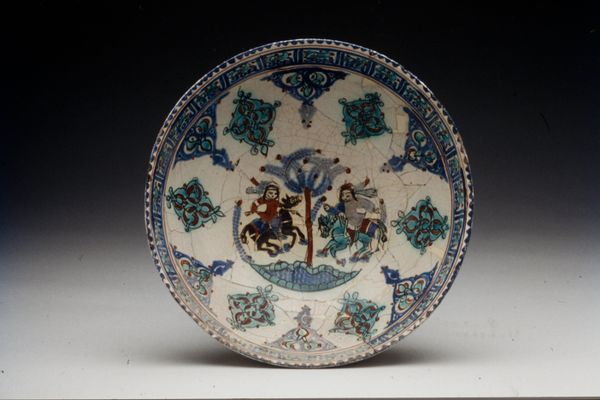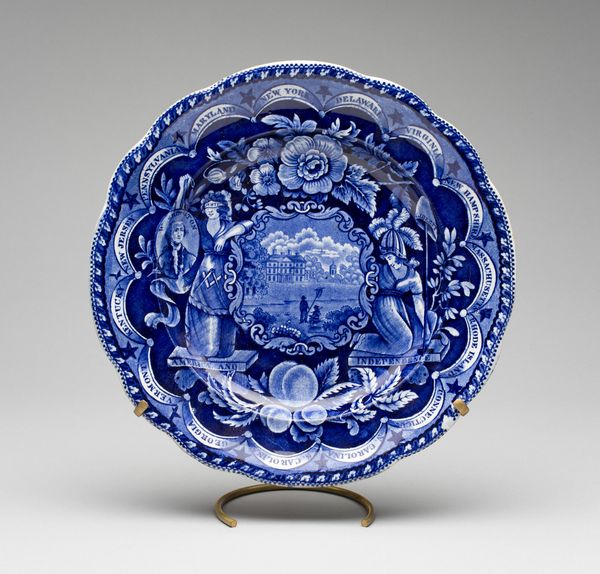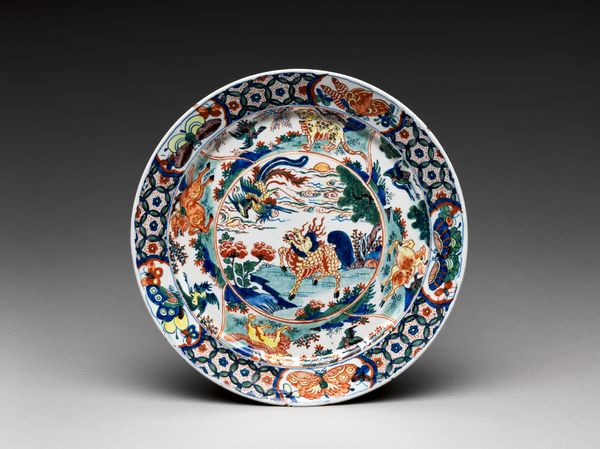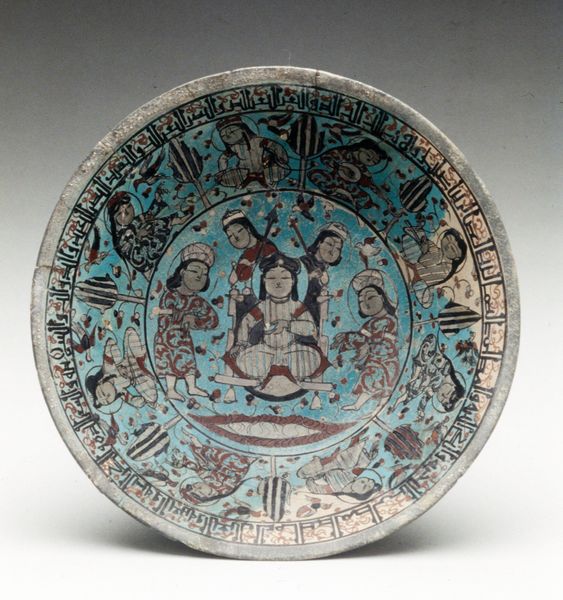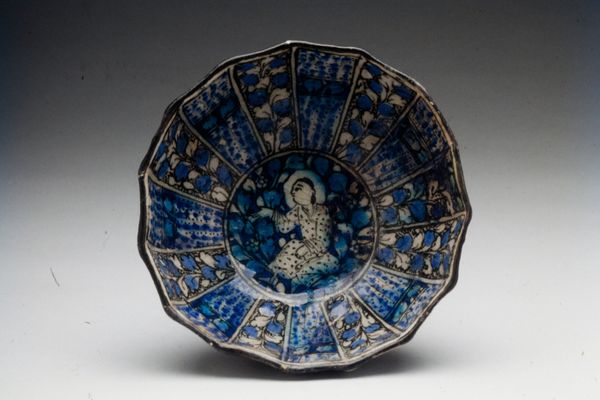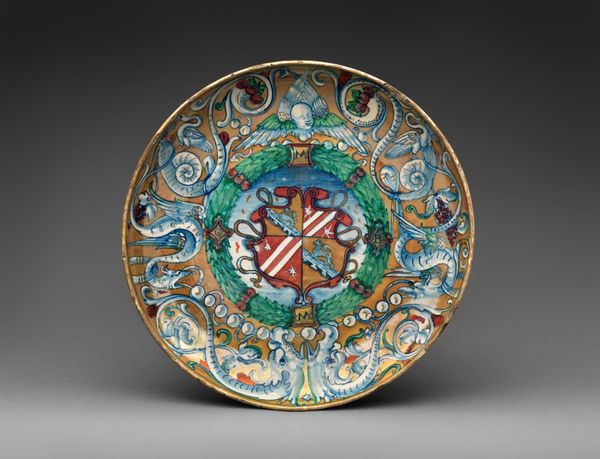
ceramic
#
arts-&-crafts-movement
#
ceramic
#
bird
#
decorative-art
Dimensions: Diameter: 16 in. x Depth: 2 1/2 in. (40.6 x 6.4 cm)
Copyright: Public Domain
Why are some types of art seen as less prestigious than others? How have these ideas changed over time? This striking serving plate is a great example of a decorative Victorian ceramic piece. It was created by the English artist William de Morgan (1839-1917) some time between the end of the nineteenth century and the beginning of the twentieth. De Morgan used rich hues of blue and turquoise, which he achieved through experimenting with uncommon glazes that were originally intended for stained glass. 🔵 De Morgan often used mythological motifs such as phoenixes, or dragons as we see in this example! The plate features three stylised dragons in perfect white. The dragons are surrounded by floral ornaments which are inspired by Iznik pottery. This is a type of Ottoman ceramic ware with roots in 15th-century Western Asia. The cobalt blue colours and traditional decorative motifs of Iznik pottery can be noticed throughout many of William de Morgan’s wares. Ceramics were highly treasured during the first centuries of the Ottoman Empire. The creation of these wares involved huge skill and intensive labour, as well as time. Chinese porcelain was seen as the best, and was readily collected throughout Europe and Western Asia. As time progressed, however, decorative arts such as ceramics came to be viewed as secondary to art forms such as painting and sculpture. These mediums are often called ‘fine’ arts – what does the adjective ‘fine’ suggest here? In 1887, William married the Pre-Raphaelite painter Evelyn de Morgan (1855-1919). Together, the couple championed the English Arts and Crafts movement. This was a response to the rapid industrialisation of Victorian society which emphasised handcrafted goods and artisanal labour. In this way, William de Morgan’s plates carry a certain political charge. This beautiful plate, now housed in New York’s Metropolitan Museum of Art, is definitely a lot more extravagant than the ones I use for dinner! Art can touch so many areas of our everyday life. ️
Comments
No comments
Be the first to comment and join the conversation on the ultimate creative platform.
